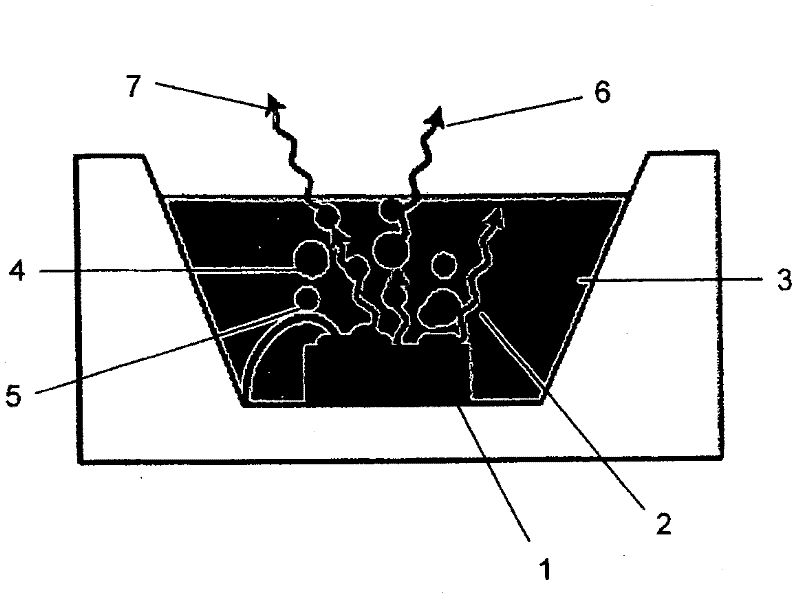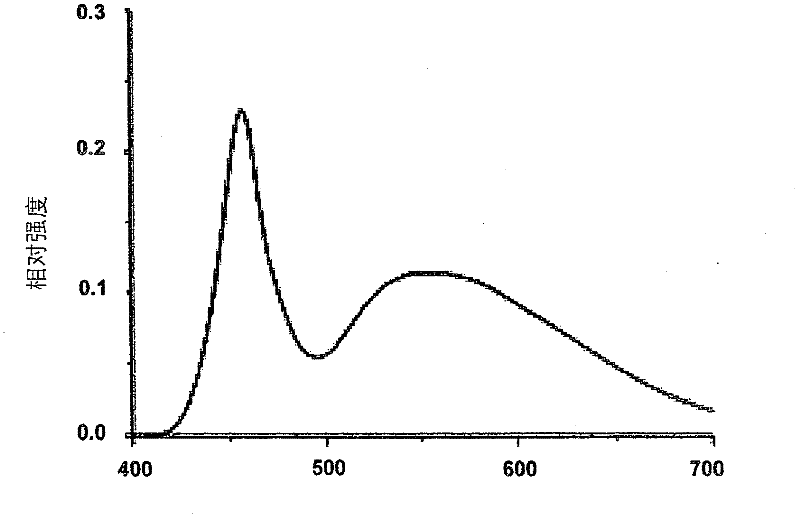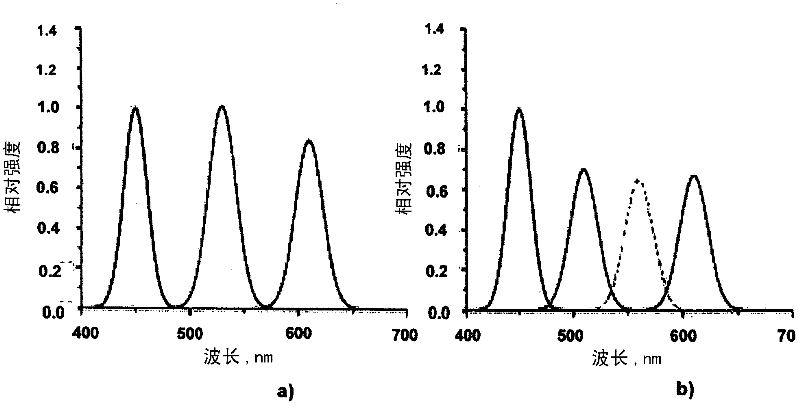Semiconductor nanoparticle-based light emitting devices and associated materials and methods
A technology of nano-particles and light-emitting devices, which is applied in the direction of light-emitting materials, semiconductor devices, chemical instruments and methods, etc., can solve the problems of quantum yield decline, reduce the optical performance of quantum dots, photooxidation, etc., and achieve the effect of eliminating obstacles
- Summary
- Abstract
- Description
- Claims
- Application Information
AI Technical Summary
Problems solved by technology
Method used
Image
Examples
example 1
[0102] Inclusion of quantum dots into suspended polymer beads
[0103] A 1% wt / vol solution of polyvinyl acetate (PVA) (aq) was prepared by stirring for 12 hours followed by extensive degassing by bubbling nitrogen through the solution for a minimum of 1 hour. Monomers, methyl methacrylate and ethylene glycol dimethacrylate were also degassed by nitrogen bubbling and used without further purification. Initiator AlBN (0.012 g) was placed in the reaction vessel and placed under three vacuum / nitrogen cycles to ensure the absence of oxygen.
[0104] The CdSe / ZnS core / shell quantum dots prepared as in Method 1 above were added into the reaction vessel in the form of a toluene solution, and the solvent was removed under reduced pressure. Degassed methyl methacrylate (0.98ml) was then added followed by degassed ethylene glycol dimethacrylate (0.15ml). The mixture was then stirred at 800 rpm for 15 minutes to ensure complete dispersion of the quantum dots within the monomer mixture....
example 2
[0110] Adsorption of quantum dots into prefabricated beads
[0111] Polystyrene microspheres with 1% divinylbenzene (DVB) and 1% thiol co-monomer were suspended in toluene (1 ml) by shaking and sonication. The microspheres were centrifuged (6000 rpm, about 1 minute), and the supernatant liquid was decanted. Washing again with toluene was repeated, and the pellet was suspended in toluene (1 ml).
[0112] InP / ZnS quantum dots prepared as described above in Method 2 were dissolved (excess, typically 5 mg for 50 mg of microspheres) in chloroform (0.5 ml) and filtered to remove any insoluble material. The quantum dot chloroform solution was added to the microspheres in toluene and shaken on a shaking plate at room temperature for 16 hours to mix thoroughly.
[0113] The quantum dot microspheres are centrifuged to form pellets, and the supernatant, which contains any quantum dots present in excess, is decanted. The pellet was washed twice with toluene (2ml) (as above), suspended ...
example 3
[0117] Inverse emulsion synthesis to form quantum dot-embedded silica beads
[0118] The InP / ZnS core / shell quantum dot solution (containing 70 mg of inorganic material) was evaporated to remove most of the quantum dot solvent, which in this example was toluene, and then mixed with a silane monomer (for example, 0.1 ml of 3-( Trimethoxysilyl)propyl methacrylate (TMOPMA) and 0.5 ml of tetramethoxysilane (TEOS)) were mixed until a clear solution was obtained.
[0119] Prepare 10 ml of degassed cyclohexane / Igepal in a 50 ml flask TM CO-520 (CO-520 is C 9 h 19 -Ph-(OCH 2 CH 2 )n-OH where n=5) (18ml / 1.35g), and inject 0.1ml of 4% NH 4 OH to form a stable inverse emulsion.
[0120] Then inject the quantum dots / silane mixture into cyclohexane / CO-520 / NH 4 in the OH mixture. at a rate of 500rpm at N 2 The resulting mixture was stirred overnight. Silica beads containing QDs were collected by centrifugation and washed twice with cyclohexane. The resulting precipitate was then...
PUM
 Login to View More
Login to View More Abstract
Description
Claims
Application Information
 Login to View More
Login to View More - R&D
- Intellectual Property
- Life Sciences
- Materials
- Tech Scout
- Unparalleled Data Quality
- Higher Quality Content
- 60% Fewer Hallucinations
Browse by: Latest US Patents, China's latest patents, Technical Efficacy Thesaurus, Application Domain, Technology Topic, Popular Technical Reports.
© 2025 PatSnap. All rights reserved.Legal|Privacy policy|Modern Slavery Act Transparency Statement|Sitemap|About US| Contact US: help@patsnap.com



